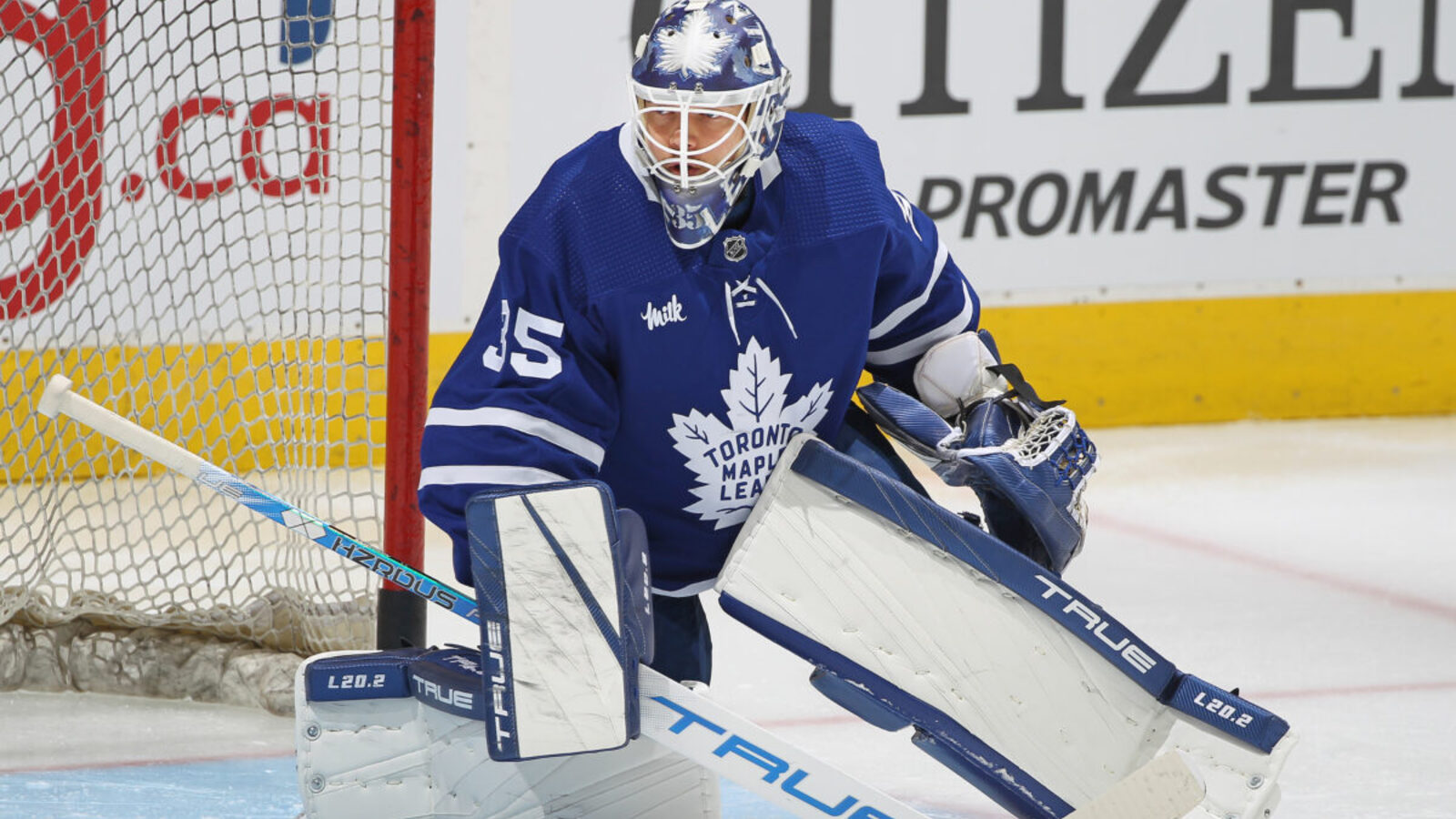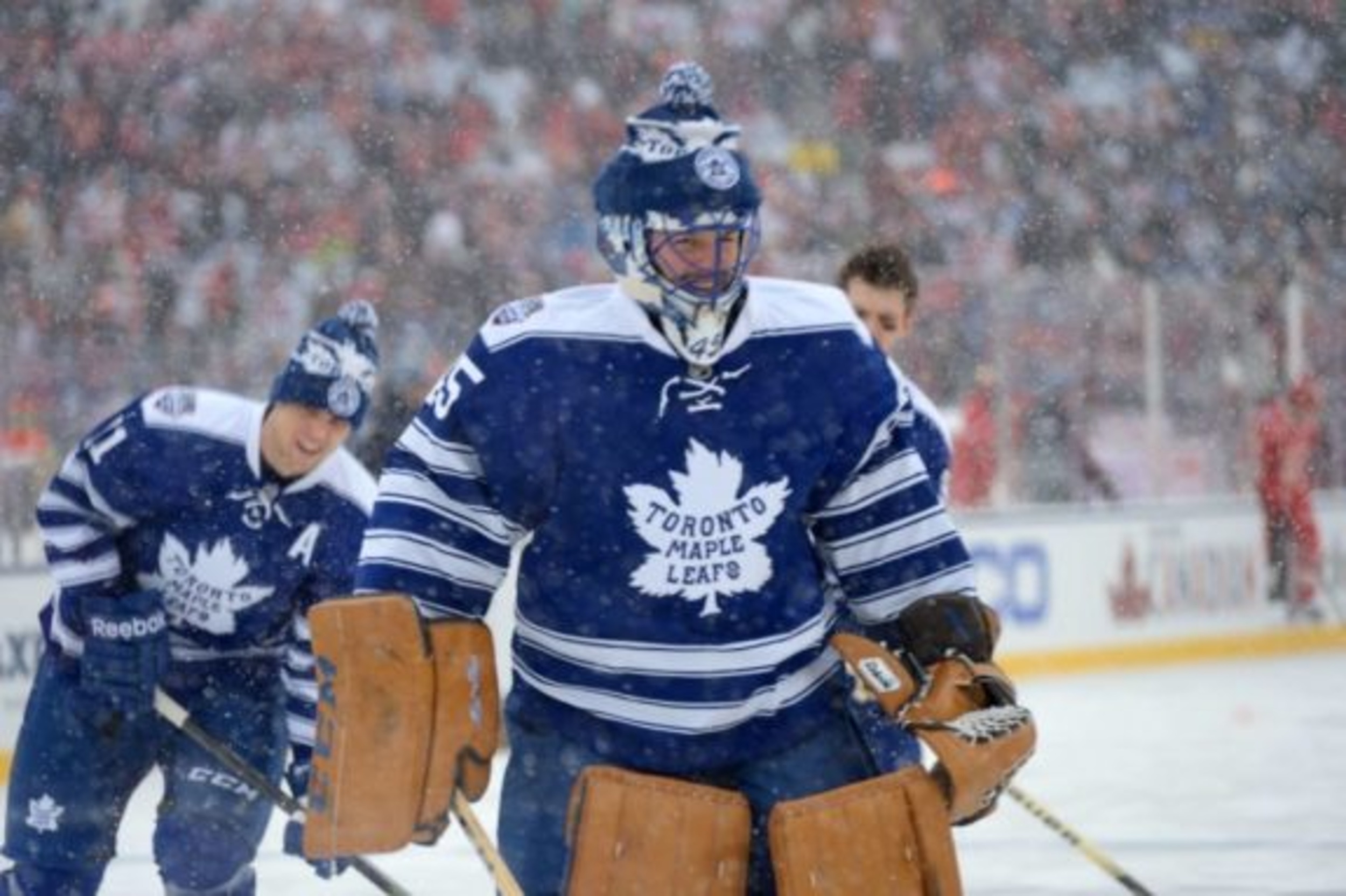
In a digital-first world, it’s easy to think that old-school hobbies like collecting hockey cards might be relics of the past. However, for Toronto Maple Leafs fans (and fans of every other NHL team), hockey cards remain a beloved tradition — not necessarily because of monetary value, but because of the stories, emotions, and connections they preserve.
Whether it’s a faded card of an almost forgotten fourth-liner like Kent Manderville (1992-93 O-Pee-Chee Premier #23) or a prized near-mint Mitch Marner Upper Deck Young Guns rookie card (2016-17 Upper Deck Series 2 #468), every piece of cardboard tells a story. And for many fans, collecting has never just been about the stats — it’s been about players, memories, and belonging.
Fandom Often Begins as a Family Thing
For many fans, collecting cards isn’t just about the stats on the back or the player on the front — it’s about the people they shared the experience with. The Hockey Writers’ Managing Editor began with baseball cards, where he stayed up late at his grandparents’, combing through binders of old baseball cards with the latest Beckett price guide spread out on the table. These were fond moments of hunting for Atlanta Braves players and loving their powder blue uniforms of the ’80s. These became treasured memories that transcended the cards themselves. They were about family, tradition, and the joy of discovery.
For my son Jim (who writes The Hockey Writers rumors reports) and me, collecting became a bridge between our love of the game and our creative passions. In Jim’s case, it even helped shape a career. As I traveled across the world with my work, I often took time during a work trip to dig through dime boxes for old Edmonton Oilers commons from the late ’70s and ’80s in Madison, Wisconsin (when I taught at the University of Wisconsin) or in Fredericton, New Brunswick (when I taught at the University of New Brunswick). [I even brought grocery store soccer cards back from China when I worked in Hebei Province.]
For Jim and me, these turned into experiences of sorting cards, setting up tables at flea markets, and eventually fuel for a future in sportswriting. That tactile connection—ripping open wax packs, organizing by team, year, or player—became a kind of storytelling all its own.
Hockey Cards Are a First Connection with Your Team
For generations, hockey cards have been the first step into becoming a fan of this beautiful game. Maple Leafs fans—young and old—often recall flipping through stacks of cards, memorizing jersey numbers and team colors before they fully understood offside or icing. Those early packs taught them the names: Mats Sundin, Wendel Clark, Dougie Gilmour, and Felix Potvin.
For some, it began with a parent, grandparent, and kitchen table. For others, the joy of collecting became the foundation for a love of the game — a hands-on way to learn about the team and feel part of something bigger. Getting autographs from Oilers players at West Edmonton Mall or building a connection to the “Soupman” — the beloved nickname that belonged to Ilya Mikheyev, who slurped his way into Toronto fans’ hearts in 2019.
Why Some Hockey Cards Stick With You
Not every player becomes a legend, but that doesn’t mean their cards don’t matter. Ilya Samsonov’s time with the Maple Leafs had its ups and downs, yet fans still collect his cards — not because they’re rare, but because they mean something. Maybe because his time with the Maple Leafs was so human and he was so likable and, at the same time, so vulnerable. Perhaps a key save helped a fledgling nine-year-old goalie see themselves in him.

Maple Leafs collectors know this well: it’s not just about who’s famous. It’s about who felt important to you. The ones who made you cheer, gave you hope, or whose sweater you wore with pride.
Local Card Shops Are Gathering Places for Stories and Community
More than just a hobby, card collecting is also a community. In many towns, the local card shop has become more than a place to buy or sell cards. It’s a meeting place, a kind of modern campfire where fans gather to swap stories, show off finds, debate line combinations, and (for old guys like me) tell stories about the players they grew up watching.
There’s something sacred about that space. Like the fires our ancestors sat around to tell stories and build their culture, the local card shop is where the culture of Maple Leafs fandom is preserved and passed down. It’s where a 10-year-old and a 60-year-old can sit side by side, trading tales about Darcy Tucker’s hits or Auston Matthews’ goals — united by the cardboard in their hands.
When Cardboard Becomes a Time Capsule
Cards aren’t just snapshots — they’re time capsules. A Nazem Kadri card might remind someone of an ill-fated playoff run against the Boston Bruins, or a James Reimer card might recall a game-saving blocker save. They’re keepsakes that let you hold onto a moment, long after the player has moved on (although Reimer will continue to play somewhere, it seems).

Even in today’s world of digital highlights and advanced stats, there’s something irreplaceable about physically holding a piece of hockey history — especially when it’s the iconic blue and white.
Hockey Cards Help Teach the Next Generation
As an educator, I know that hockey cards are doing more than fueling fandom in schools and homes across Canada — they’re helping kids learn to read, count, sort, and organize. Where I live in Comox, British Columbia, hockey cards provided by Colossal Cards & Collectables (our local card shop owned by Paul Tupper and Ryan Handley where fans are expertly welcomed by Dinh Pham’s willingness to answer youngsters’ questions or celebrate a rare find) are used in classrooms as educational tools, helping the youngest fans build their reading and math skills and connection to the sport.
For many of these kids, their first card becomes their first connection. They might not know every player on the roster, but they know that the Maple Leafs (or on Vancouver Island, the Canucks) are their team, and they want to learn more.
Hockey Cards Are a Tradition That’s Not Going Anywhere
From the corner store to the collector’s convention, from binders in childhood bedrooms to showcases at card shops, hockey cards have kept Maple Leafs culture alive and well. They’ve adapted with the times. From wax packs at your local Mom & Pop corner store with mis-centered O-Pee-Chee cards and gum to hobby boxes at Colossal Cards, from bicycle spokes to Upper Deck’s works of art that have turned into professionally graded and authenticated slabs containing jersey patches, serial-numbered cards, and autographs, their purpose is to connect fans to the team and each other.
Whether it’s 1956 (the year I began to collect) or 2025, that feeling of cracking open a pack and seeing Matthew Knies in a Maple Leafs jersey staring back at you hasn’t changed. It’s magic. It’s memory. It’s Maple Leafs hockey — in your hands.
More must-reads:
- Penguins great considering retirement in 2026
- Watch: Golden Knights win Game 3 with shocking buzzer-beating goal
- The 'NBA Draft Lottery winners since 2000' quiz
Customize Your Newsletter
 +
+
Get the latest news and rumors, customized to your favorite sports and teams. Emailed daily. Always free!








